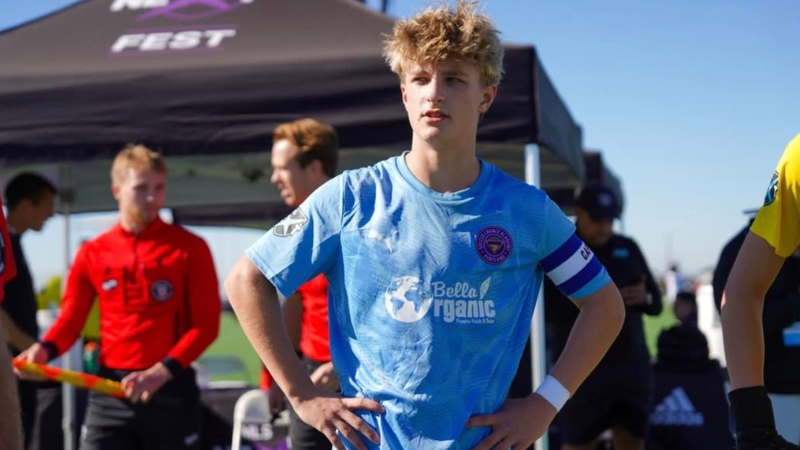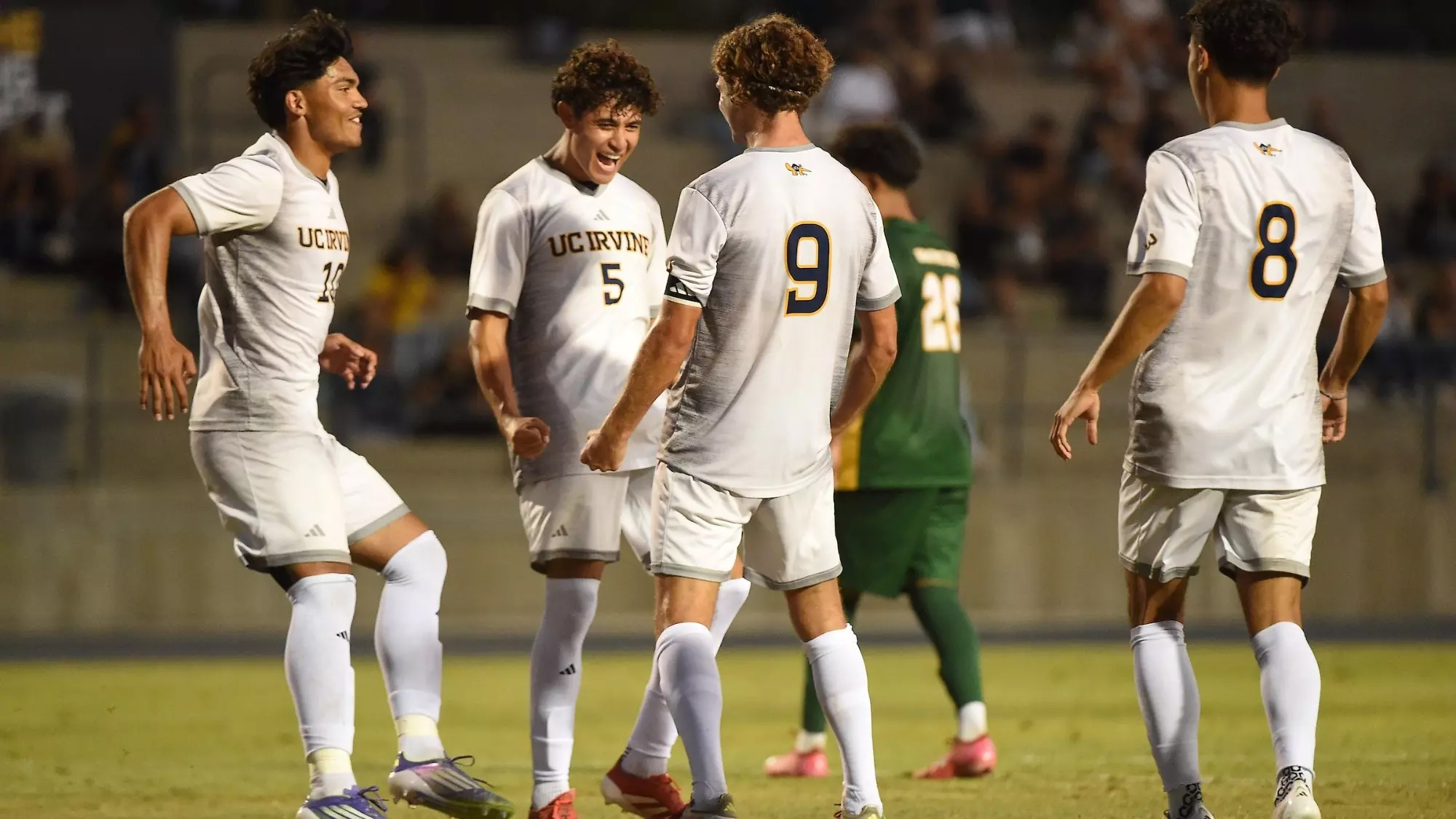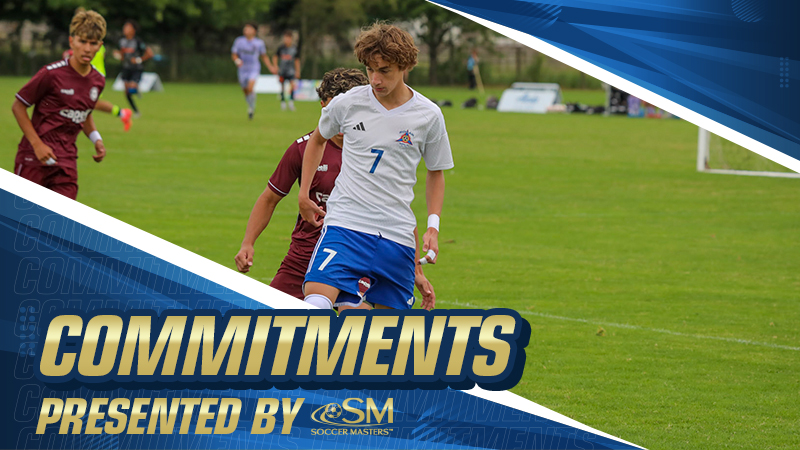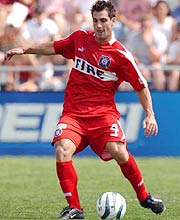 Bocanegra with the Fire
Bocanegra with the FireA history of Generation adidas: Part one
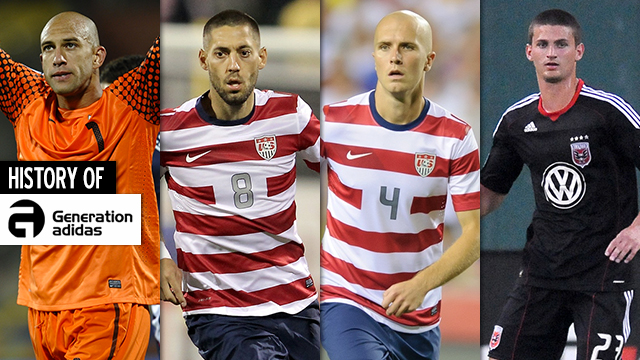
There are many paths to MLS, but perhaps the most illustrious is the Generation adidas avenue.
But how successful has the program (previously known as Project 40) been at producing pro talent?
 Bocanegra with the Fire
Bocanegra with the FireThe initiative was put in place to provide players the opportunity to exit school early (or completely skip college) for entry into the MLS SuperDraft, but still have the assistance to obtain their college degree.
Since its establishment in 1997, 168 players have been signed via the initiative, with seven more set to join the league via that mechanism at the 2013 SuperDraft.
During that time, players signed have enjoyed the complete range of success, from players making zero appearances in MLS play, all the way to providing future U.S. national team mainstays like Carlos Bocanegra, Tim Howard and Michael Bradley a first pro opportunity.
As the class is set to grow in 2013, it’s an apt time to take a look back and survey what the program has accomplished over the last 15 years.
General Overview
Of the 168 players who have signed Project 40/Generation adidas contracts, 95 have gone on to log at least 5,000 career minutes in Major League Soccer or other major professional leagues, roughly 57% of the group.
To get a better idea of what defines success, or at least attempting to, for the purpose of this story, players who have logged between 5,000 and 10,000 minutes (or at least project to, amongst more recent classes) are classified as “adequate pros” and those who have played more than 10,000 minutes in league play or transferred overseas are “professional mainstays.”
Of the former category, 34 players managed to at least reach the 5,000-minute threshold, or at least appear poised to reach the mark. Sixty-one players have gone on to become professional mainstays in either MLS or overseas.
Roughly 27 players made it abroad, either transferring or signing as a free agent in Europe. Familiar names such as Bocanegra, Howard, Bradley, Clint Dempsey, Sacha Klejstan are among the U.S. stars who initially began a professional career through the program.
The table below reflects how the numbers break down per class.
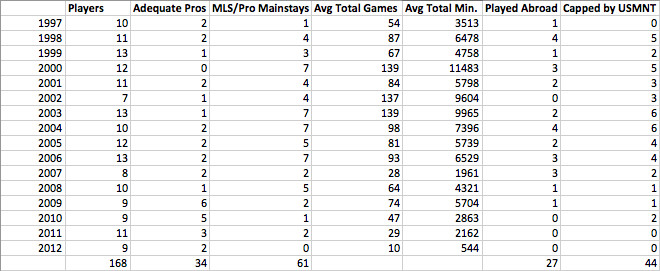
Recent classes
Throwing a wrench in those numbers when surveyed overall are the most recent Generation adidas classes, as some players have only spent a year in the league, making it difficult to know just how successful some of those players will be.
However, some players have already been cut from the team that drafted them, with the best examples being Michael Tetteh (Seattle), Corey Hertzog (New York) and Michael Nanchoff (Vancouver) from the 2011 class, who had their options declined this past offseason with minimal impact made, if any. The trio could still land somewhere, but right now don’t project to succeed as professionals.
On the other end of the spectrum, it’s almost safe to assume that other members of that class are almost certain to be at minimum, adequate professionals. Looking at the same class, Perry Kitchen (D.C. United) and Will Bruin (Houston Dynamo) both look to be mainstays at the very least, in MLS, and Bruin could soon earn his first full cap with the U.S. national team, as he is current in Jurgen Klinsmann’s latest camp.
Players from the class of 2012 had minimal impact in MLS last season, with New England Revolution midfielder Kelyn Rowe playing the most minutes (1,897) and Vancouver’s Darren Mattocks scoring the most goals (seven in 1,300 minutes).
USMNT products
One of the surprises of the survey is the rate at which players who have come through Project 40/Generation adidas landed a cap with the U.S. national team. As indicated in the table, 44 players who entered the league at one point earned a cap with the national team.
In fact, the only classes that haven’t produced at least one player with a cap are the 1997, 2011 and 2012 groups, although the latter two can certainly be chalked up to the lack of time and opportunity, as the newer classes are trying to become established professionals.
Of course, it should also be noted that the majority of the 44 players didn’t go on to become U.S. national team mainstays or contributors – only seven of those capped by the U.S. have more than 50 caps.
Then, there’s also the case of Generation adidas players who aren’t eligible for the U.S. national team who have caps for other national teams. This includes players like Roger Espinoza (Honduras), Darren Mattocks (Jamaica), Yura Movsisyan (Armenia) Bakary Soumare (Mali), Arturo Alvarez (El Salvador) and Kei Kamara (Sierra Leone), raising the total of GA products who’ve earned internationals caps to 50.
This is part 1 of a two-part series. Check back tomorrow for an analysis on the best Generation adidas class and how the 2013 class stacks up against the rest.
Headlines
- Recruiting Roundup: January 5-11
- Professional Signing Tracker: 2025-26
- Tracking Division I Coaching Changes
- 2026 Women's Division I Transfer Tracker
-
Ten MLS Next AD U17 Players to Know

- U18, U19, U20 MNT Training Camp Rosters
-
ECNL Boys FL: Top Under-16 Performances

-
Commitments: ECNL Star to the WCC

- TopDrawerSoccer TeamRank Update - Girls
-
ECNL Girls FL: Under-16 Players to Watch


